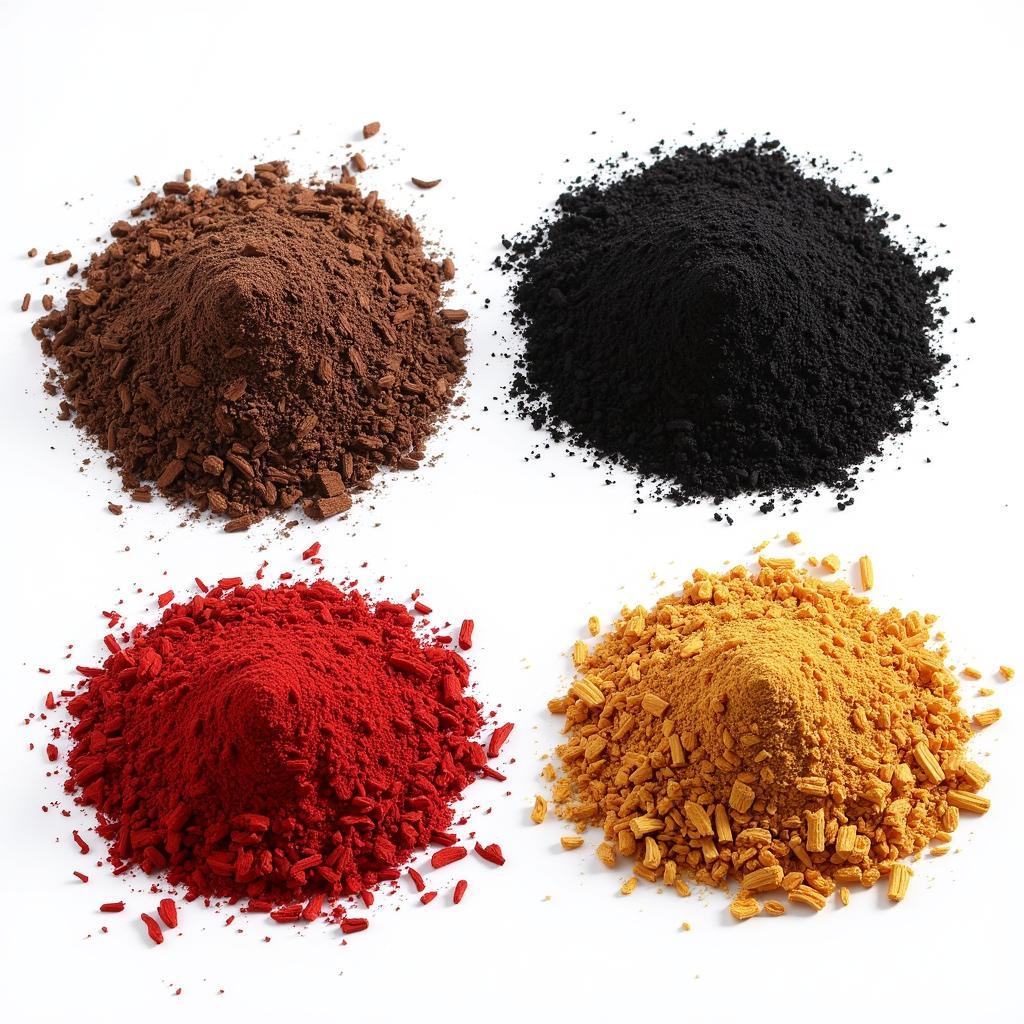Mulch is a fantastic addition to any garden, providing numerous benefits like weed suppression, moisture retention, and temperature regulation. But beyond its practical uses, mulch also plays a significant aesthetic role. Choosing the right color can dramatically enhance your garden’s overall look and feel. So, what colors does mulch come in? Let’s explore the vibrant world of mulch hues and how they can transform your outdoor space. We’ll examine traditional choices like brown and black, as well as more unconventional options, helping you find the perfect fit for your garden’s unique personality. You can learn more about the general color of mulch from this helpful article: what color is mulch.
Exploring the Spectrum of Mulch Colors
Traditional mulch colors like brown, black, and red remain popular for a reason. They offer a classic, natural look that complements a wide variety of plants and landscaping styles. However, the mulch rainbow extends far beyond these basics, encompassing a surprising array of hues, from gold and burgundy to even vibrant blues and greens. These less conventional colors can add a unique pop of personality to your garden, creating a striking focal point or complementing specific plant colors.
Understanding the Benefits of Different Mulch Colors
Beyond aesthetics, different mulch colors can also impact your garden’s microclimate. Darker mulches, like black and brown, absorb more heat, which can be beneficial in cooler climates for warming the soil and promoting faster plant growth. Conversely, lighter mulches, such as tan or gold, reflect sunlight, helping to keep the soil cooler in hotter regions. Choosing the right color based on your climate can help you optimize your garden’s health and productivity. Interested in changing the colors of your hydrangeas? Check out this guide: how to make hydrangeas change color.
What are the Most Common Mulch Colors?
-
Brown: Brown mulch mimics the natural decomposition of organic matter, offering a classic, earthy look that blends seamlessly with most garden settings. It’s a versatile choice that complements a wide range of plant colors and landscaping styles.
-
Black: Black mulch creates a dramatic contrast against green foliage and brightly colored flowers, making them pop. It can also give your garden a more modern, sophisticated feel.
-
Red: Red mulch, often dyed from recycled wood, adds a vibrant splash of color to your landscape. It can be particularly effective in highlighting green foliage and creating a warm, inviting atmosphere.
-
Gold/Tan: These lighter mulches offer a softer, more subtle look than darker options. They’re ideal for creating a bright, airy feel and can be particularly attractive in gardens with pastel-colored flowers.
 Common Mulch Colors – Brown, Black, Red, and Gold
Common Mulch Colors – Brown, Black, Red, and Gold
Unconventional Mulch Colors: A Bold Statement
For those seeking a more unique and adventurous look, unconventional mulch colors like blue, green, or even purple can add a dramatic flair to your garden. These colors can be used to create eye-catching focal points, complement specific plant colors, or simply express your individual style. However, it’s important to use these bolder colors judiciously to avoid overwhelming your garden’s overall design.
How Long Does Mulch Color Last?
The longevity of mulch color depends on several factors, including the type of mulch, the quality of the dye, and environmental conditions. Dyed mulches will eventually fade over time, especially with exposure to sunlight and rain. Natural mulches, while not as vibrant, tend to retain their color longer. To learn more about mulch color longevity, read this informative article: how long does mulch color last.
Choosing the Perfect Mulch Color for Your Garden
Selecting the right mulch color is a matter of personal preference and considering your garden’s overall aesthetic. Think about the existing colors of your plants, hardscaping, and any other garden features. Do you want the mulch to blend in seamlessly or create a striking contrast? Also, consider the mood and atmosphere you want to create. Warm colors like red and brown can create a cozy, inviting feel, while cooler colors like blue and green can evoke a sense of tranquility. Do pine trees’ foliage change color? Find out here: do pine trees change color.
“Choosing the right mulch color can be as impactful as choosing the right paint color for your home,” says renowned landscape designer, Amelia Green. “It’s a simple yet powerful way to enhance your garden’s beauty and create a truly personalized outdoor space.”
Conclusion
Mulch comes in a surprisingly diverse range of colors, offering endless possibilities for enhancing your garden’s aesthetic appeal. From traditional browns and blacks to more vibrant and unconventional hues, there’s a mulch color to suit every taste and garden style. By carefully considering your existing landscape, desired mood, and the practical benefits of different colors, you can choose the perfect mulch to transform your outdoor space into a vibrant and inviting oasis. What color should weed ash be? Explore more about this topic here: what color should weed ash be.
FAQ
- Does mulch color affect plant growth?
- How often should I replace my mulch?
- Can I mix different mulch colors?
- Is dyed mulch safe for my plants?
- What is the best mulch color for weed control?
- How can I prevent mulch from fading?
- What is the most eco-friendly mulch option?
For further assistance, please contact us at Phone Number: 0373298888, Email: [email protected] or visit our address: 86 Cầu Giấy, Hà Nội. Our customer service team is available 24/7.

